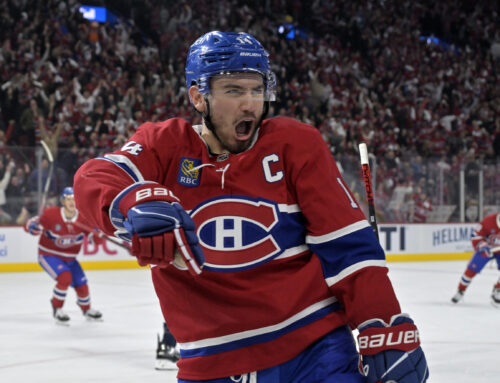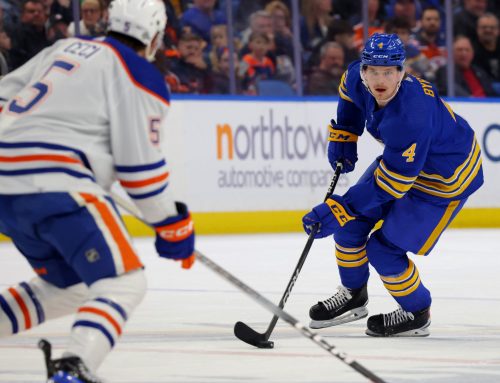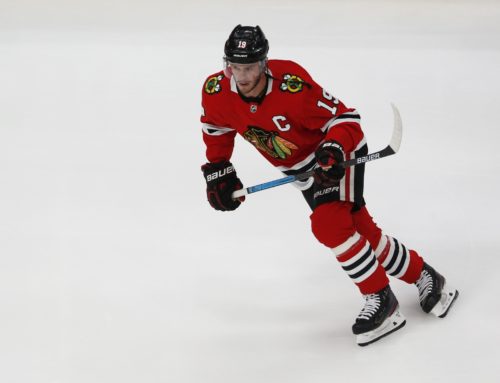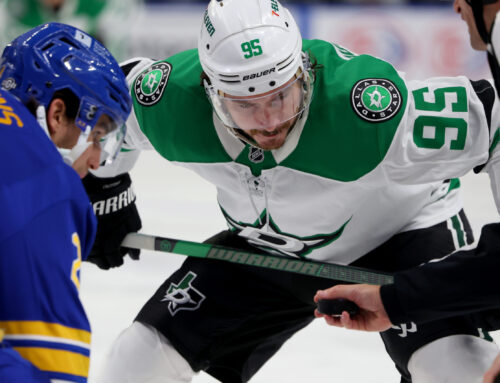
I wanted to begin today's Ramblings by saying thank you to David Johnson for his tireless work over the years. For those that might not be familiar with the name, you may be familiar with his site Hockey Analysis. Perhaps more appropriately it is now his former site, as it went dark on Wednesday night. That includes the sister site Puckalytics.
Anyone who has read my work over the years know how much I relied on this site for the information. Not only was it easy to read and use, but it was constantly being improved, either through things like adding Puckalytics, new game states, or just the server speed. I first started writing fantasy hockey in the 2011-12 season, and Hockey Analysis was one of the first sites I was directed to, along with Behind The Net. It remained a staple for me right up until it was taken offline. Some of the stats used in today's Ramblings link back to Hockey Analysis, just to show you how often I used it personally.
There are still many other sites that are available, and you can find them by clicking through here.
Again, all I can say is thank you to Mr. Johnson for all the effort he put in to a wonderful site that was the springboard not only for myself, but for many in the hockey community.
****
The New York Islanders agreed to a one-year deal with defenceman Calvin de Haan with a value of $3.3 million. The 26-year old rearguard had 25 points playing a full 82 games in 2016-17.
He will be an unrestricted free agent at the end of this contract.
Fantasy-wise, it’ll be hard for de Haan to have any real fantasy relevance depending on the league setup. In leagues that count hits and blocked shots he can be very solid, as he’s posted triple digits in each category four straight years now, and finally added a reasonable point total. In leagues that don’t count those categories, however, he’s going to be stuck behind Johnny Boychuk and Nick Leddy for the foreseeable future.
****
Minnesota re-signed both of their remaining big restricted free agents in Mikael Granlund and Nino Niederreter a couple of days ago. The former received a three-year deal with an average annual value of $5.75 million while the latter earned a five-year deal worth $5.25 million annually.
Ian Gooding had his slant on these signings in yesterday’s Ramblings.
My thoughts on Granlund and Niederreiter were covered in a Ramblings from a month ago. I recommend taking a spin through that piece a glance at their 2016-17 season.
Just to add to that – I was kind of surprised Granlund only received three years. He turns 26 years old in February, which means he’ll be 28 for his next contract. I’m just speculating, but I wonder if Granlund is still in a Wild jersey in three years’ time. He’ll be in the decline phase of his career and re-signing him to a long-term contract at that point doesn’t make a lot of sense. Obviously that’s years away and a lot can change between now and then, I just found it curious to give a player going into his Age 25 season coming off a career year just three years.
****
Be sure to grab your copy of the fresh-off-the-digital-press Dobber Fantasy Hockey Guide for the upcoming season from the Dobber Shop!
****
Throughout the summer, I’ve been going team-by-team to review the relevant fantasy performances from the previous season. We are nearing the end of the list, but next alphabetically is Tampa Bay.
Calling Kucherov’s 2016-17 a breakout year may be kind of misleading; he had 59 total goals and back-to-back 65-plus point seasons from 2014 through 2016. He was one of just 11 forwards to manage at least 59 goals and 130 points over those two years, and the other players on the list are all bona fide stars. He’s also the youngest skater on that list.
However.
The fact that he put up 40 goals and 85 points last year – keep in mind he played just 74 games – lends itself to a full-fledged breakout. It was kind of like Tyler Seguin when he finally got to Dallas; he had posted two very good seasons in a row, but he finally exploded offensively.
Additional ice time was one reason Kucherov managed to have such a fantastic season. While 19:26 per game is high, it’s not in the Sidney Crosby/Connor McDavid/Patrick Kane stratosphere, at least on the surface. Breaking it down, though, he did have the third-most five-on-five minutes per game of all wingers behind Kane and Artemi Panarin. He was also 10th among heavily-used forwards in power-play minutes per game, and four of the skaters ahead of him all played for the Flyers.
I do wonder, however, if that trend of such significant ice time continues. He is, at worst, Tampa’s second-best offensive option (and there’s a good argument he’s the best), but a combination of injuries and pressing for the playoffs may have factored in. Consider:
Through Kucherov’s first 15 games, with Stamkos still in the lineup, the Russian winger played just 17:32 per game. From the game when Stamkos was injured on November 15th through the end of the year, that jumped to 19:55.
Kucherov’s highest ice time per game (21:04) in a month came in March when the team was pushing for a playoff spot. It was also Kucherov’s most productive month with 22 points.
By no means am I saying Kucherov was only productive because of his additional ice time, but it certainly was a factor. I think it’s also fair to wonder if the team is healthy, and comfortably in a playoff spot, does he play 20 minutes a night?
There was nothing really out of line with the rest of his performance. Until last year, he was a career 12 percent shooter at five-on-five, and last year he shot 12.9 percent. He shot 18.3 percent last year on the power play after being a career 14.4 percent shooter. That’s a spike, but it’s nothing obscene. He did enjoy a career-high rate of 76.8 percent individual points percentage, or the rate at which he tallies a point when he’s on the ice. Him being a bigger factor in the team’s offence at this point of his career is nothing surprising, though.
Concerns here don’t revolve around a career-year because of percentage spikes, but rather it’s just ice time. The trade of Jonathan Drouin should ensure Kucherov remains a focus of this team offensively, and if he can play 80 games it could mitigate any drop in TOI. He’s a legitimate star, though I don’t think he improves offensively from here (not that he really needs to).
Even though he played just 66 games last year, Johnson putting up 45 points isn’t a poor season. His goals and assists per game did jump up from 2015-16, but there are some other concerns here.
The 27-year old centre managed 17 power-play points, which is very solid for fantasy purposes. It was, however, another somewhat disappointing five-on-five season for production. His points per 60 minutes at five-on-five was 1.74, third among regular Tampa Bay forwards last year. That in and of itself isn’t an awful number; it was inside the top-half of forwards with at least 750 minutes played last year. It is, however, another data point for who he is exactly as a forward, taking his other seasons into account. His first full year was 2013-14, and he registered 1.74 points per 60 minutes again. Johnson’s best season was 2014-15 when the Triplets line dominated the league, and he managed an even 3.00 points per 60 minutes. That cratered in 2015-16 to 1.50 and, as mentioned above, he managed just 1.74 last year. In other words, over three seasons from 2013-14 and 2015-17, totalling nearly 2850 minutes of ice time, his points per 60 minutes is 1.67, and then in one season with just over 960 minutes in ice time it was 3.00.
It is also important to note that as he has matured in his career, he has become less of a shooter and more of a distributor; his shots per 60 minutes at five-on-five three seasons ago was an even 10.0, and that has dropped since to 5.92 last year. Three seasons ago, he was among the top-25 forwards in the league in shot rate, finishing in the same range as guys like Zach Parise and Tyler Seguin; last season he finished just inside the top-200 forwards in the league in shot rate, in the same range as guys like Jussi Jokinen and Chris Kelly. That is a drastic turn of events.
When a roster has snipers like Kucherov and Stamkos, perhaps the best use of Johnson’s talents is to get the puck to them rather than trying to finish the play himself (like Ryan Johansen in Nashville). That’s not great news for fantasy owners, though, especially ones hanging on his 2014-15 season like that is something he will repeat. We have three seasons of data telling us one thing, and one season of data painting a much rosier picture. He can still be a productive fantasy asset, with 20 goals and 55 points within reach in a healthy season. Hoping that he gets back to the 70-point plateau, though, is asking too much.
A couple of months ago I added to a discussion from Ian Gooding regarding the Tampa Bay power play. For some preliminary thoughts on this, which directly related to Hedman, check that out.
It was an outstanding season for the Swedish defender with a career-high 16 goals and a career-high 56 assists. It was also a year that saw him garner a career-high in ice time with 24:30 per game, a career-high in power-play points with 33, a career-high in overall shooting percentage at 9.6 percent, and the second-highest rate at which he garnered a point when he was on the ice of his career at 48.3 percent. That is a lot of career- or near-career-best marks.
The biggest concern is the power-play points. His 33 points were by far the most of his career, and just four PPPs fewer than he put up over the previous three seasons combined. He led all defencemen in points per minute on the power play by a significant margin (a rate roughly 25 percent higher than the next-highest mark), and that mark of 8.01 points per 60 minutes was nearly double the rate he managed from 2013-16.
Yes, Hedman became a focal point on the team last year with all the injuries the team went through, kind of like Kucherov, but how does that change next year with everyone (presumably) healthy? Also, as mentioned in the piece on the Tampa PP I listed above, he doesn’t fit naturally on a Stamkos power play. How does the team rectify that next year? There are a lot of questions we won’t have answers to until the start the season.
Hedman is a top-end defence option in any fantasy format, but I feel as though he’ll be overdrafted in roto leagues in particular. Expecting a repeat anything close to what he did in 2016-17 is unrealistic, and even cracking 60 points will be a big season. I can easily see him being drafted in the second round of 12-team leagues, and that’s way too high. We’ll see where he’s actually landing when ADP data starts being readily available, but I’m cautious for now.
One Comment
Leave A Comment
You must be logged in to post a comment.





 BUF
BUF NYR
NYR CHI
CHI WSH
WSH CBJ
CBJ VAN
VAN S.J
S.J PIT
PIT ANA
ANA

The loss of hockeyanalysis is BRUTAL. Apologies in advance to readers of my cage match column.
Michael – what specific sites do you recommend for filing in the gap?